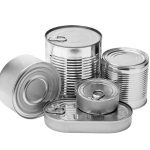Canada vs. Europe – Review of Medical Device Regulations
The medical device industry is a cornerstone of global healthcare, and understanding regulatory requirements across jurisdictions is essential for manufacturers aiming to enter international markets. Among the key markets, Canada and Europe present distinct regulatory frameworks, both of which uphold high standards for patient safety and product efficacy. This blog offers a comparative overview of Canadian and European medical device regulations, highlighting similarities, differences, and strategic considerations for manufacturers.
Regulatory Authorities and Frameworks
Canada – Health Canada and the Medical Devices Regulations (MDR)
In Canada, medical devices are regulated by Health Canada under the Food and Drugs Act and its subordinate Medical Devices Regulations.
Europe – European Medicines Agency (EMA) & Notified Bodies under the MDR
In Europe, the regulation of medical devices falls under the European Union Medical Device Regulation (EU MDR 2017/745), which replaced the former Medical Device Directive. Devices must be CE marked and are assessed by Notified Bodies—independent organizations designated by EU countries.
Device Classification
| Canada | Europe |
| Class I | Class I |
| Class II | Class IIa |
| Class III | Class IIb |
| Class IV | Class III |
While both systems use risk-based classification, Canada’s Class I-IV scheme differs in structure from the EU’s Class I–III, requiring careful cross-referencing when preparing for multi-region compliance.
Licensing and Market Access
Canada:
- Class I devices: Do not require a Medical Device Licence (MDL); only require establishment registration.
- Class II–IV devices: Require an MDL issued by Health Canada.
- A Quality Management System (QMS) certification under ISO 13485 by a MDSAP-recognized body is mandatory for Class II–IV.
- Foreign clinical data may be accepted if it aligns with Health Canada standards.
Europe:
- All classes (except some Class I devices) require a Notified Body assessment and CE marking.
- Manufacturers must implement a QMS and conduct a clinical evaluation as per the MDR.
- EU MDR also includes new requirements for UDI (Unique Device Identification), post-market surveillance, and clinical investigations.
Clinical Evidence Requirements
Canada:
- Requirements vary based on risk class.
- Clinical data is generally required for Class III and IV devices.
- Health Canada may accept foreign clinical data if it meets Canadian standards.
Europe:
- Emphasis on clinical evaluation reports for all classes.
- Under MDR, even legacy products must show compliance through updated clinical evidence.
Post-Market Obligations
| Obligation | Canada | Europe |
| Incident Reporting | Mandatory; reporting requirements are part of the manufacturer’s obligations and may be fulfilled by the manufacturer or on the manufacturer’s behalf | Mandatory; reporting requirements are part of the manufacturer’s obligations and may be fulfilled by the manufacturer or on the manufacturer’s behalf |
| Licence Renewal | Annual for Class II–IV | Not required for CE mark, but subject to PSUR (Periodic Safety Update Reports) for Class IIa and above |
| PMS Documentation | Summary reports (bi-annual or annual); maintaining quality management systems and ongoing quality management is essential for post-market compliance. Summary reports required: O Every 2 years for Class II O Every year Class III & IV | PSUR, trend reports, UDI tracking, EUDAMED; maintaining quality management systems and ongoing quality management is essential for post-market compliance |
Transition to New Regulations
Canada: Canada has transitioned to the Medical Device Single Audit Program (MDSAP) as a requirement for QMS certification since 2019.
Europe: The MDR officially replaced the MDD in May 2021, with staggered grace periods for certain device categories until 2028. The transition to MDR introduced stricter clinical and technical documentation standards.
Manufacturers must prepare for increased scrutiny, detailed technical documentation, and heightened emphasis on clinical evidence. Strategic takeaways for manufacturers include:
- Align with MDSAP for Canadian market access and EU MDR for Europe
- Anticipate differing classification structures and documentation formats
- Strengthen QMS and clinical evaluation strategies to meet both jurisdictions’ expectations
- Stay informed of evolving regulatory updates in both markets
Conclusion
Both Canada and Europe offer robust and rigorous frameworks for medical device regulation, but their structural differences require strategic planning from manufacturers. Companies intending to market in both regions must align with MDSAP for Canada and EU MDR for Europe, while carefully navigating classification, documentation, and clinical evidence requirements.
Staying up-to-date with evolving regulatory expectations and engaging with experienced regulatory professionals is critical for ensuring compliance, minimizing delays, and achieving successful market access.
How Dell Tech Can Support
Dell Tech can provide regulatory support for submitting medical devices in Canada by providing guidance through the Health Canada licensing process, including classification, documentation preparation, and regulatory submissions. Our team ensures compliance with the Medical Devices Regulations, assists with Safety and Efficacy evidence, and supports Quality System documentation. For more details and information, please feel free to contact Dell Tech Laboratories.
DELL TECH HAS PROVIDED PROFESSIONAL, CONFIDENTIAL CONSULTING SERVICES TO THE SPECIALTY CHEMICAL INDUSTRY IN CANADA, THE USA, EUROPE AND ASIA FOR THE LAST 40 YEARS.





